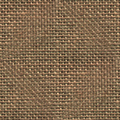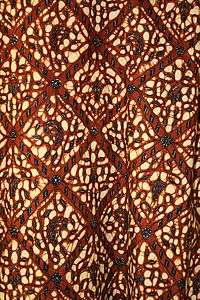Warp printing
_LACMA_M.60.36.1_(4_of_6).jpg)
Chiné silk, French, 1760s. LACMA, M.60.36.1
Warp printing is a fabric production method which combines textile printing and weaving to create a distinctively patterned fabric, usually in silk.[1] The warp threads of the fabric are printed before weaving to create a softly blurred, vague pastel-coloured pattern.[1][2] It was particularly fashionable in the eighteenth century for summer wear.[2]
The silk and taffeta fabrics produced by this technique have a variety of names, including chiné,[1] Pompadour taffeta (after Madame de Pompadour) and chiné à la branche.[2] Chiné velvet was also possible, although the technique was very difficult and expensive and only made in a few places in France in the eighteenth century.[3]
See also
References
- 1 2 3 "Printing of Silk Warps for the Manufacture of Chiné Silk" (PDF). Posselt's Textile Journal. December 1907. Retrieved 14 February 2013.
- 1 2 3 Fukai, Akiko (2002). Fashion : the collection of the Kyoto Costume Institute : a history from the 18th to the 20th century. Köln [etc.]: Taschen. p. 56. ISBN 9783822812068.
- ↑ "Robe and petticoat". Victoria & Albert Museum. Retrieved 14 February 2013.
This article is issued from Wikipedia - version of the 11/7/2016. The text is available under the Creative Commons Attribution/Share Alike but additional terms may apply for the media files.


.svg.png)